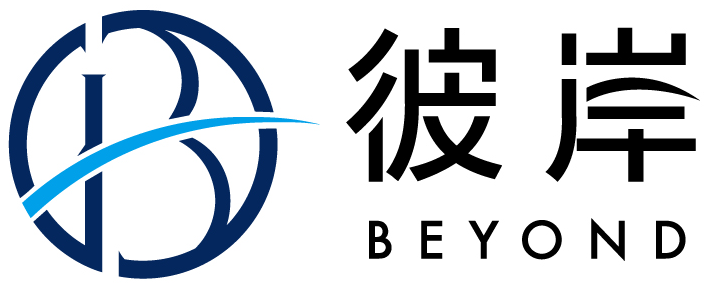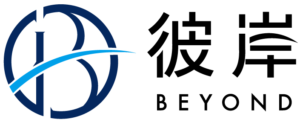The Emergence of Social Media in Chinese Manufacturing
“What’s up, homie? I’m Tony,” a young salesman, wearing a deerstalker hat and holding a magnifying glass over one eye, said to the camera in British-accented English at a factory in China’s Guangdong province. “Let’s see if the killer left any clues on it.”
Tony Zhu focused the magnifying glass onto an illuminated store sign. “There are no fingerprints on the surface. It’s made of good acrylic!”
The 25-year-old sells light boxes, used as illuminated signs at retail stores, to business customers. TikTok and Instagram may not sound like places for business networking, but Zhu’s videos in exaggerated Southern American, Mexican, Thai, and Chinese accents are attracting real clients. Customers from the Americas, Europe, and Africa have visited the factory in China after seeing his videos.
Adapting to a Competitive Export Market
As the domestic economy slows, Chinese manufacturers are trying harder to win orders in a competitive export market. While most users watch online videos for entertainment, factories are now on these platforms to sell everything from electronics components to lighting products and industrial chemicals. The vast reach of short videos and recommendation algorithms have helped some find new business customers. Chinese sourcing agents — people who help overseas buyers look for suppliers, and factories in countries like Vietnam and Cambodia — have also promoted goods on TikTok.
Striking a Balance: Humor and Business
The Chinese light-box factory’s Instagram page, where salesman Tony Zhu posts comedic skits, has nearly 450,000 followers. It’s a delicate task promoting factory products in a format designed for lip-syncing videos, Zhu told Rest of World. If a video is too commercial, it will have a low reach and bring in little business. But if the content is too funny, it will get lots of views but put off potential clients. “We strike a balance between entertainment and business in every piece of content,” he said. The firm gets, on average, one business inquiry for every 1,000 views on TikTok, and about 3% to 10% of inquiries are converted into orders, according to Zhu.
Evolution of Client Connections
Manufacturers in China used to connect with foreign clients through trade fairs, wholesale markets, and sourcing agents. With the rise of e-commerce sites in the late 1990s, foreign importers and Chinese factories were able to connect through platforms such as Alibaba.com and Made-in-China.com. Factories sometimes invest tens of thousands of U.S. dollars a year on fees and advertising spending on Alibaba.
Zhu said that both e-commerce sites and social media were important to the company’s business growth. A business English major in university, he perfected the language by watching Hollywood movies and playing Grand Theft Auto video games. After working at an export service company, Zhu joined the signage manufacturer, LC Sign, in 2022 as a salesperson.
Viral Success and Industry Influence
His accent imitation was inspired by comedians Russell Peters and Trevor Noah, who have mimicked Indian and South African accents in their routines. Since his videos went viral in late 2023, LC Sign has gained about 445,000 followers on Instagram and 148,200 on TikTok. Zhu’s boss made the star salesman a partner of the signage company. Other factories have come to him for tips, and, now, he gets to make videos full-time.
Although most international social networks are blocked in China, exporters commonly use virtual private networks (VPNs) to promote their products abroad. Timmy Tang, 27, who makes videos for her family’s paper box factory in Guangdong, said she recently shipped samples to a TikTok user in South Africa and reached a deal with an Indian buyer who discovered her business through her videos on WeChat Channels. WeChat is used primarily by the Chinese population, but many China-focused foreign traders are on the app as well.
The Future of Multimedia Marketing
Tang said that since the short video platforms have large young user bases and powerful recommendation algorithms, her videos were discovered by people who actually needed paper boxes. “Business clients are getting younger,” she told Rest of World. “They may come across the videos after work and think, oh, I may need this product.”
Many small businesses are trying to copy this formula of comedic sales pitches. A sweet potato processing factory in Hongan County, Hubei province, began posting videos this year to platforms including X, YouTube, and WeChat Channels to appeal to foreign traders. “To be or not to be, that is the question,” factory boss Han Dexiao said in a clip. “To eat or not to eat, it’s quite easy. I choose to eat all,” he continued, while walking past racks of sweet potato vermicelli.
Han, 51, told Rest of World that the company had created an English-language website, set up a shop on Alibaba, and thought that short videos could attract more clients. He said young workers at his factory helped prepare English scripts for him and taught him how to pronounce every word. “I was scared people wouldn’t understand me,” Han said. “But I think I could gradually learn to introduce my factory to foreign friends.”
Unexpected Fame and New Marketing Tactics
Some manufacturers gained fame outside of their target audience in unexpected ways. One manufacturer of chemical glycine, Donghua Jinlong, went viral this year as Gen Z users made memes derived from its mundane, AI-voiced marketing videos, making fun of the lines boasting of “high-grade industrial glycine.” Glycine is an ingredient used in food production, water treatment, and other industries.
As economic growth in China slows, companies are using multimedia marketing tactics popular in the domestic Chinese e-commerce industry, such as short videos and livestreaming, to lure foreigners, Lin Zhang, an associate professor with the University of New Hampshire who studies entrepreneurship in China, told Rest of World. By addressing an international audience directly, the influencers also give a human touch to Chinese manufacturing, Zhang said.
Skepticism and Traditional Preferences
Some importers are not convinced by the multimedia marketing tactics. Bas van Rens, founder of Guangzhou-based Sino Import Solutions, which helps European businesses import from China, told Rest of World he preferred the traditional way of browsing listings on e-commerce sites, where he could target specific products and verify business licenses. “I would never react on a video,” he said. “On Alibaba and 1688, it’s easy to find your products.”
Final Thoughts
During a recent Instagram livestream on a hot day, Zhu, the viral light-box salesman, hustled around the factory building to show his audience how workers assemble letter-shaped light boxes with fans on the side. Zhu also showed viewers a picture of his cat on his phone. Although many of his fans on social media don’t need any light boxes, their engagement helps attract those who do, Zhu told Rest of World. “The non-business audience has made our page more lively. We are showing this industry to everyone in an entertaining way,” props and comic timing included. He has also peddled store signs dressed up as Batman, Mickey Mouse, and Super Mario.


